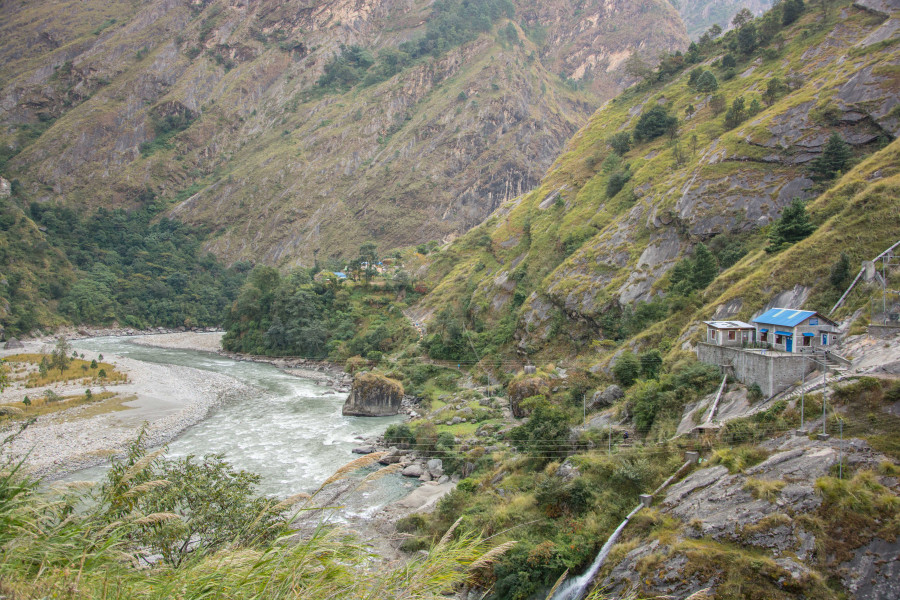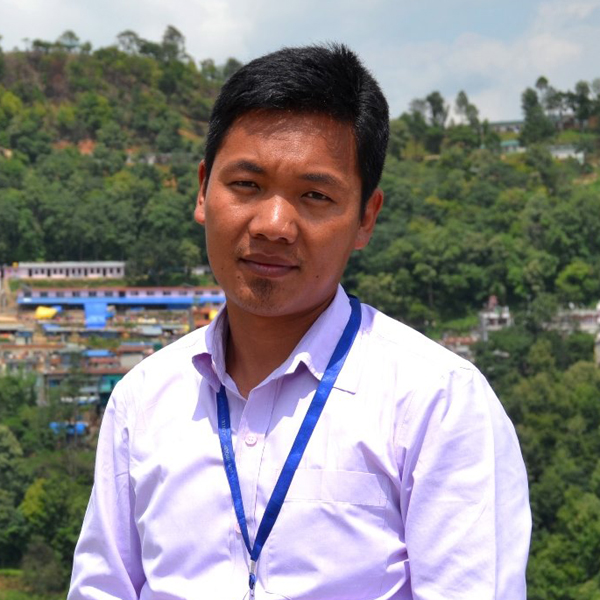Money
Micro hydro plants destined for oblivion in rural Nepal
The Nepal Electricity Authority will shut them down after connecting villages to the national grid as part of the government's electricity roadmap.
Kumbha Raj Rai
A decade ago, when much of the country’s rural population lived off the grid, Nepali villages boasted their own renewable energy sources—micro hydro. They were all built by local communities.
At that time, in 2010, only 65 percent of the population had an electricity connection.
The micro hydro plants that typically produce 5 kW to 100 kW of electricity do not require a dam and reservoir like large hydroelectric plants. They had made life better for villagers, enabling children to study at night, and families to watch TV and use cell phones.
In Okhaldhunga, its four dozen micro hydro plants will soon become things of the past.
Locals had built a 12 kW plant on the Rumdi River in Manebhanjyang Rural Municipality-5 a decade ago which is still in operation. This year, they transferred the entire infrastructure to the Nepal Electricity Authority, which will use the electricity poles and transmission lines, but not the power produced by the micro hydro.
Under the government’s electricity roadmap, the state-owned power utility is required to light up every household in Nepal by 2023.
The Nepal Electricity Authority has signed power purchase agreements with the six hydropower projects being developed on the Solu River basin by the private sector which have a combined installed capacity of 217.5 megawatts.
The project has been working to evacuate electricity through the Solu Corridor—a 132 kV transmission line connecting Tingla, Okhaldhunga, Jaljale and Lahan. The rural electrification project started in 2010 is jointly funded by the government and EXIM Bank of India, and is expected to be complete by December 2020.
Man Bahadur Pulami, chairman of the Rumdi Khola Micro hydro Project, recounts that when they installed the micro hydro plant, the entire village was lit up and everyone was happy.
Many locals even borrowed money to fund the hydro plant, and some invested their savings in it. The donor community and the village development committee also provided funding. The plant was constructed at a cost of more than Rs10 million.
“Soon, the micro hydro will be of no use. The Nepal Electricity Authority did not allow us to use the plant as an alternative source of energy. However, the power utility will reuse the poles, transformer and wires," said Pulami. “Villagers have invested in the project, and now it’s going to waste as the village will soon be lit with power from the national grid. We are worried about the equipment as it will start to rust.”
Not only in Manebhanjyang, many micro hydro plants built in the eastern hills will become useless sooner or later, according to locals. There are more than 50 micro hydro plants in Okhaldhunga that were built in the past one decade. These plants cost Rs1 billion to build, and can produce a combined 1 megawatt of electricity.
Currently, 40 plants are operating. Several new projects had started operating in the last few years.
“It looks like the investment of the community will now go to waste. It’s like pouring water on sand,” said Pradip Sunwar, a local at Khijidemba Rural Municipality. “The local people had contributed 90 percent of the labour while building such small projects that had transformed the village,” he added. “Everything is gone now.”
Between 2007 and 2014, more than 400 micro run-of-the-river hydropower plants were built by the government with help from the World Bank as part of the Nepal Micro Hydro Promotion project.
The smallest micro hydro plant, at 7 kilowatts, provides electricity to about 100 households; and the biggest one, at around 116 kilowatts, serves 940 households (about 4,023 people), according to the bank.
“At least the government should have brought a policy to feed the power generated by these small micro projects into the national grid, and allow locals to invest in them and collect the returns,” said Sunwar.
Sanjeev Kumar Sah, chief of the Nepal Electricity Authority’s distribution branch in Okhaldhunga, said work was in progress to assume ownership of all micro hydro projects including their infrastructure. “But there is no policy to buy or evacuate energy generated by these micro hydro plants to the national grid.”
According to him, there was some discussion at a board meeting of the Nepal Electricity Authority. “But we haven’t heard of any decision.” As of now, the power utility has taken ownership of eight micro hydro plants.
In Likhu Rural Municipality, the community, however, is not willing to hand over the project's ownership to the authority.
Among the eight local units in Okhaldhunga, three—Siddhicharan Municipality, Chishanku Rural Municipality and Molung Rural Municipality—now get electricity from the national grid.
Electric power had reached 94 percent of Nepal’s population as of 2018, according to the Energy Progress Report. Only 1.3 million out of the total population of 29 million remain to be connected to an electricity supply. In 2010, only 65 percent of the population had an electricity connection.
Officials said Nepal was expected to achieve 100 percent access to electricity within a few years, well ahead of the target year of 2030 set by Sustainable Development Goal 7.




 14.12°C Kathmandu
14.12°C Kathmandu















